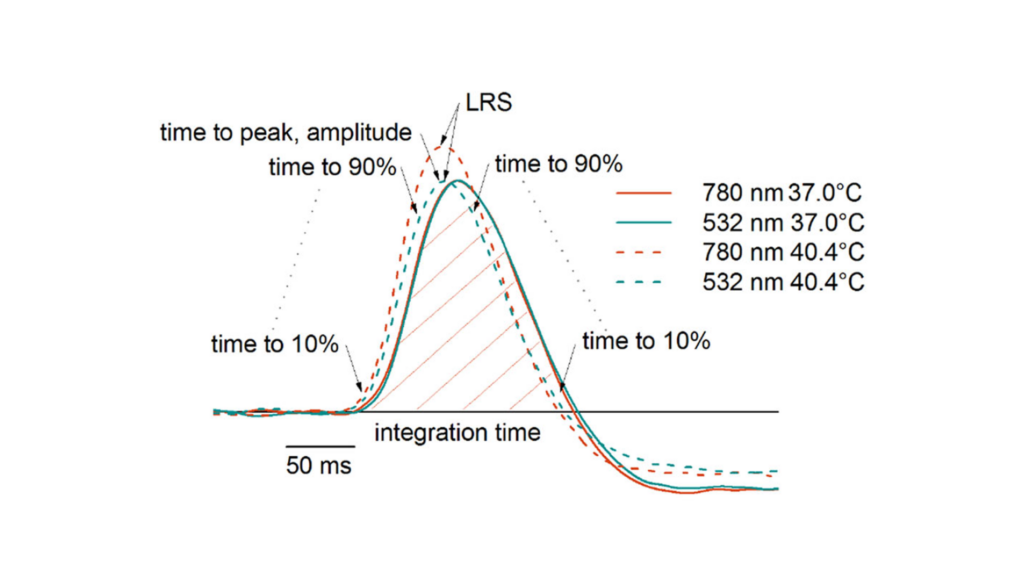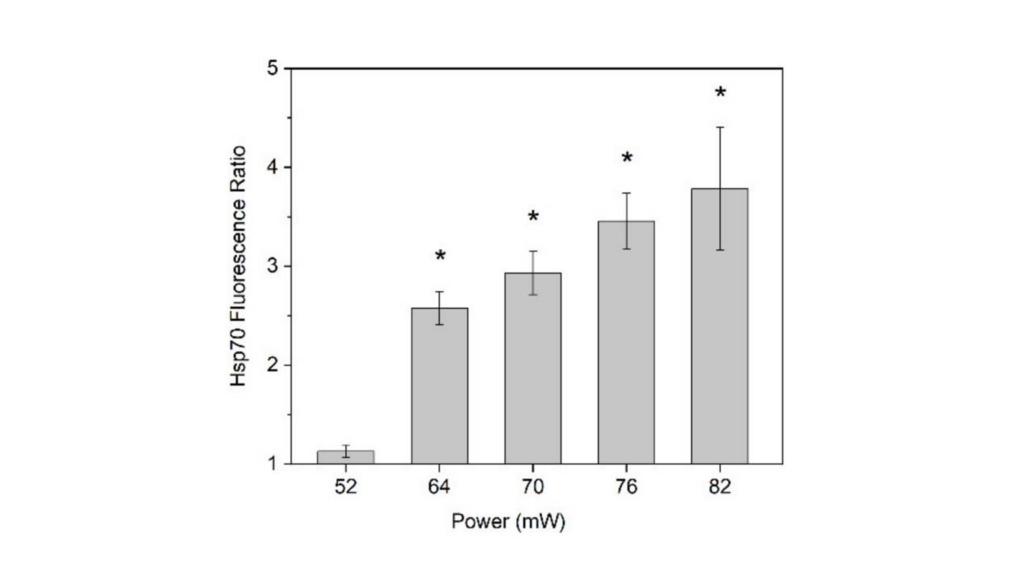The study presents a new method for real-time monitoring of retinal temperature in living mice using electroretinography (ERG), a technique that records electrical responses of the retina to light. By accurately measuring temperature changes, this method offers a non-invasive way to enhance treatment precision, particularly valuable in managing conditions where maintaining the right retinal temperature is crucial for therapy success.
Pitkänen, M., Kaikkonen, O. & Koskelainen, A. In vivo monitoring of mouse retinal temperature by ERG photoresponses. Exp. Eye Res. 187, (2019). DOI: 10.1016/j.exer.2019.05.015
Abstract
Non-damaging heating of the retina and RPE provides a promising treatment for retinal diseases. However, the lack of proper control over the temperature hinders the development of safe and repeatable procedures. Here, we demonstrate with mice a non-invasive method for estimating the temperature changes in the retina and the RPE during a heating procedure. The method is based on monitoring the temperature dependent properties of retinal photoresponses recorded by electroretinography (ERG).
In this study, our aim was to investigate the feasibility of ERG signal for retinal temperature estimation, utilizing a-wave and b-wave kinetics as the source of temperature information. We quantified the temperature dependencies of photoresponse kinetics and developed two linear regression models between the temperature and the photoresponse features, enabling temperature estimation. With the first model, based on the a-wave of a single photoresponse, the RMS error obtained for retinal temperature estimation was <0.9°C. The second model, applying the b-waves of five dim flash responses, an RMS error of <0.7°C was achieved. In addition, we tested the sensitivity of the method to small changes in light stimulus strength and investigated suitable stimulus intervals for continuous retinal temperature monitoring.
The proposed method provides a convenient technique for monitoring mouse retinal and RPE temperature with ERG recording when studying controlled retinal heating. Similar temperature dependencies exist in human ERG suggesting that this approach could also be applicable in clinical heating treatments.

